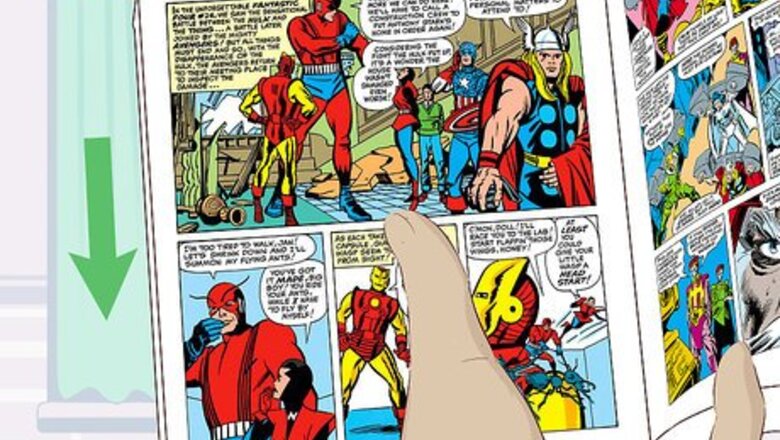
views
Reading Comic Pages Properly
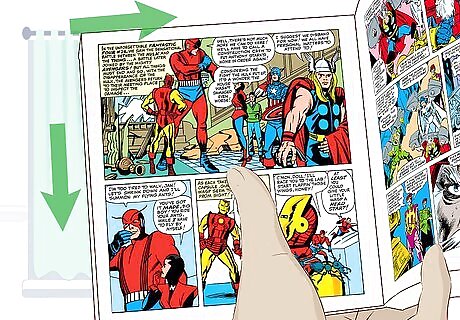
Read Western (American) comic pages page from left to right, top to bottom. Start with the panel on the top, leftmost area of the page. Read each dialogue bubble from left to right, starting with the leftmost panel and moving your eyes to any dialogue featured on the bottom or right of the panel.

Move to the next panel as you reach the right side of the first panel. Most comic pages have two or three panels on the top row of the page. Repeat the way you’ve read the first panel on all subsequent panels.

Read panels that are stacked on top of each other together. The panels are arranged in this way because they are meant to show two connected actions or pieces of dialogue. These panels will usually arranged differently from the other panels on the page, and will always interact with one another. They may slant to show dynamic action, or share a speech bubble or two. Start with whichever panel is on top, then read the panel just under it.
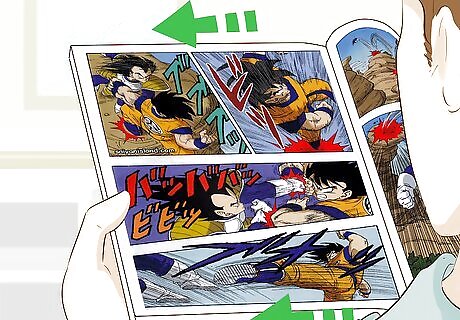
Read manga (Japanese comics) from right to left. Japanese books are read in reverse order from American books. They are still read top to bottom, but progress from the right to the left and from back to front. Read both the panels and the dialogue from right to left, and the entire book from the back to the front.
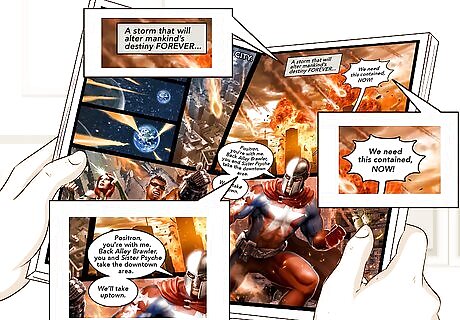
Pay attention to dialogue bubble shapes. Differently shaped dialogue bubbles indicate different forms of dialogue. Speech bubbles are circular, with a tail pointing to whichever character is speaking. This means a character is talking aloud. Jagged bubbles and/or enlarged, bold text can indicate that a character is shouting. Thought bubbles look like puffy clouds, and have a trail of dots pointing toward the character’s head. This means the character is thinking to themselves. Narration panels are square or rectangular blocks. This means the “narrator” is talking, telling you what is going on in a scene and revealing information the characters do not know.
Selecting a Comic to Read

Figure out what kinds of stories interest you. There are all kinds of comic stories besides the usual superhero narrative, so you can approach picking out a comic like you would any other book. If you like romantic stories, there are comics under that genre. If action is more your thing, there are tons of comics that fulfill that want. Pick a genre and start exploring what comics fit the bill.
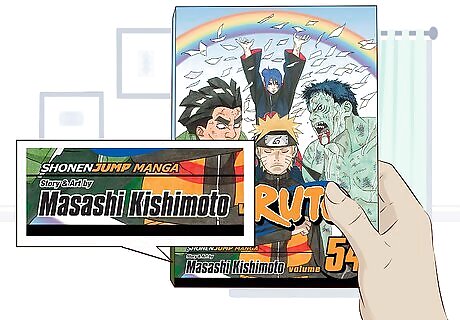
Pick the work of a specific writer. There are just as many comic book writers out there as there are comic book stories. You’ve probably heard about several popular writers as you’ve researched different comics. If the story arcs or subject matter they’ve written interest you, check out the rest of their library.

Select a story that features a character you like. Some of the most famous characters, such as Spiderman, Superman, Wonder Woman, and Ms. Marvel, come from comic books. Start off with a character that interests you and explore the different stories they’ve starred in. Pick a comic to read based on whichever part of a character’s story interests you the most.
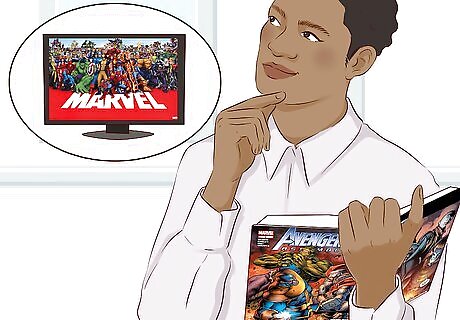
Start with the comics that inspired your favorite movies. Many popular comics have been converted into popular movies, such as Scott Pilgrim vs. the World and the Avengers series. If you love these movies, there’s a good chance you’ll love the comics they’re sourced from. Checking out these comics first can be a good launching point into getting into other comics.
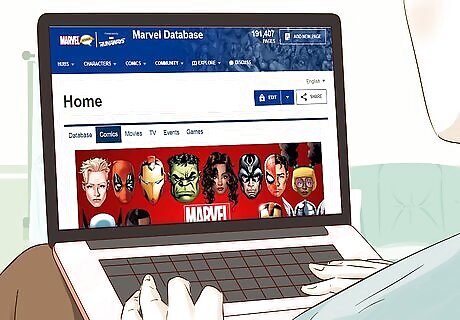
Research the stories you’re interested in. Once you’ve figured out what you’d like to read, you may want to investigate the timeline of their stories. Many comics have been in print for decades, meaning there’s more story than you can expect to get through right away. Read up on what’s happened up to modern issues of the comic you’re interested in, and use any events that catch your attention as a launching point of where to start reading. You can start researching comics and their characters by checking out online databases and encyclopedias devoted to specific publishers, series, or characters. Some great places to begin researching include https://www.comics.org/, http://dc.wikia.com/wiki/DC_Comics_Database, and http://marvel.wikia.com/wiki/Marvel_Database. You can also obtain comic reference books from a library or bookstore. Several authors have written about the histories of comic publishers, series, and characters.

Check out different reading lists. If you’re interested in a certain character or publishing company but still can’t figure out where to start, you can always turn to reading lists. You can find most reading lists online; they’re typically written by hardcore fans and aficionados. Most reading lists will recommend where to start with a series based on major events in that character’s storyline. To find reading lists online, run a Google search for “DC reading list,” “Marvel reading list,” or “Spiderman reading list.” You can substitute the first word of the search term with whatever publisher or character you want to read.
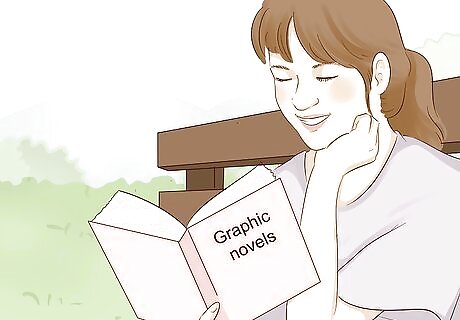
Learn the terminology for comics. There are many different terms for the way comics are printed. Knowing what they mean will make it easier to know what you’re looking for. “Graphic novels” and “trade paperbacks” are multiple issues of one comic gathered into one book. They separate the storyline into larger chunks for you to read all at once. An “omnibus” is like a graphic novel or trade graphic book, except it bundles an entire storyline into one large book. These are great finds, but are generally much more expensive. Save this kind of purchase for stories you really like! “Issues” are small chapters of a storyline. They are usually released once every month. This is the most common way comics are published.
Collecting Comic Books
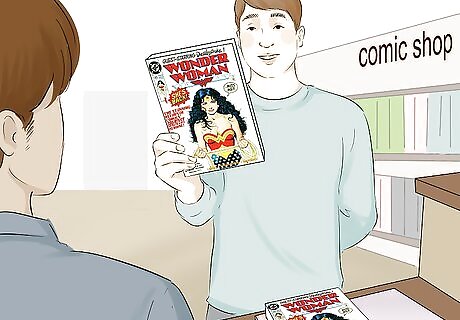
Browse comic shops regularly to buy physical comic books. Comic shops are constantly adding new books to their inventory, and will have plenty of books to peruse while you decide what to read. Physical comics have the advantage of always being readable, even when your Internet is down. They also make it easier to display and show off your collection as it grows. Make sure you have adequate shelving or other storage space (boxes and/or bins) before you start collecting physical comics.
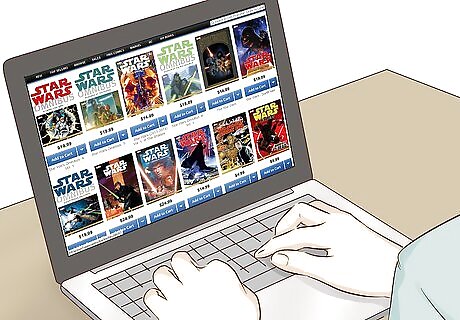
Purchase digital comics for a convenient way to store your collection. Digital comics are easier to store, since they can all be found in one place. They are ideal if you don’t have a lot of space to keep physical comics, or just want to keep your collection organized as easily as possible. Consider buying digital copies of comics to read, then buying print editions of your favorite stories to give the creators extra support. You don’t have to choose one or the other. Plenty of comic fans have both digital and print copies of their favorite comics. Several printed comics also give digital copies of the same issues to buyers at no extra charge.

Decide how you’ll store your comics. Comics are collectible items. While you buy them to read them, you want to preserve them so you can keep reading them years down the road. Keep them on shelves like you would normal books, but tuck them into special sleeves to keep them from yellowing. They will be made from plastic, and can be opened and closed with tape. Some comics come with special collector’s boxes, which are great for protection and will look amazing on your shelves! You won’t have this problem with digital comics, naturally—though you may want to back them up on separate cloud storage (like Dropbox or Google Drive), just in case something happens to your device or current cloud service.

Obtain a few comic books for free. The comic book world loves to indulge fans with free issues! Take advantage of these giveaways to start reading your first comic and build your new collection. Google to learn when the next Free Comic Book Day will be at a comic shop near you and plan to take a trip there to find a comic you’ll love. Comixology is an online comic store with a large selection of free comic issues to choose from. Visit https://www.comixology.com/free-comics to browse around. Borrow your comics from the library or a friend. Many libraries feature full sections stocked just with comics for you to read for free. Alternatively, if you have a friend who reads comics, ask if you can read from their collection.
Diving In

Start with whatever story you want. Don’t worry about having to read comics in a specific order; it’s not necessary. You won’t miss too much by starting off at a place in a storyline that interests you. If need be, you can brush up on parts you aren’t sure about through Google or Wikipedia.

Pick one story or series to start reading. The world of comics is big and wide. You don’t want to overwhelm yourself just as you’re starting out! Read just one series that really catches your eye first. Once you finish with it (or hit the final issue until the next is published), you can start on another series or storyline.
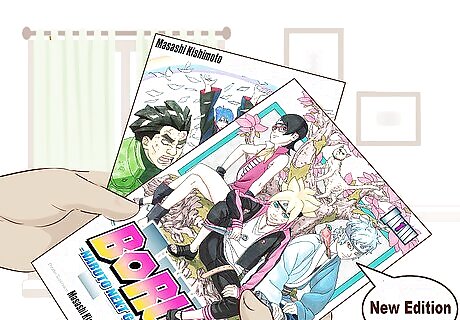
Branch out into new stories. Take it slowly at first. If you like one story, look around for other comics featuring the same character, written by the same author, or released by the same publisher. Over time, you may find yourself enjoying stories you never considered reading before!



















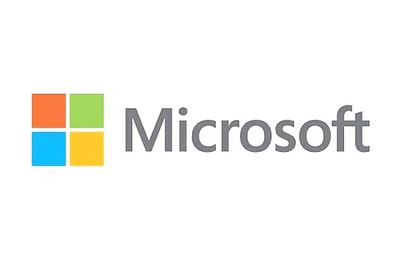
Comments
0 comment